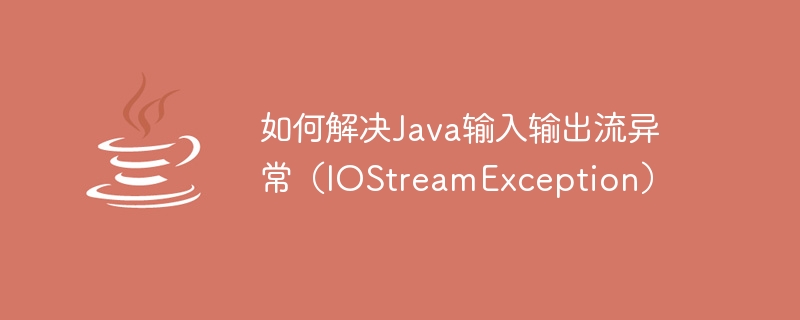

How to solve Java input and output stream exception (IOStreamException)
Overview:
In Java programming, input and output stream exception (IOStreamException) is a common mistake. It usually occurs while processing files or network connections and can result in data loss or operation failure. In order to solve this problem, we need to correctly handle input and output stream exceptions. This article will explain how to resolve IOStreamException in Java and provide some sample code to help you understand better.
Solution:
The following are some common solutions to avoid or handle IOStreamException.
Sample code:
try { // 打开文件或建立网络连接 InputStream inputStream = new FileInputStream("test.txt"); // 读取数据 int data = inputStream.read(); // 处理数据 // ... // 关闭流 inputStream.close(); } catch (IOException e) { // 处理异常 e.printStackTrace(); }
Sample code:
InputStream inputStream = null; try { inputStream = new FileInputStream("test.txt"); // 读取数据 int data = inputStream.read(); // 处理数据 // ... } catch (IOException e) { // 处理异常 e.printStackTrace(); } finally { // 关闭流 if (inputStream != null) { try { inputStream.close(); } catch (IOException e) { e.printStackTrace(); } } }
Sample code:
public void readData() throws IOException { InputStream inputStream = null; try { inputStream = new FileInputStream("test.txt"); // 读取数据 int data = inputStream.read(); // 处理数据 // ... } finally { // 关闭流 if (inputStream != null) { inputStream.close(); } } } public void processFile() { try { readData(); } catch (IOException e) { // 处理异常 e.printStackTrace(); } }
Sample code:
try { InputStream inputStream = new BufferedInputStream(new FileInputStream("test.txt")); // 读取数据 int data = inputStream.read(); // 处理数据 // ... inputStream.close(); } catch (IOException e) { // 处理异常 e.printStackTrace(); }
Summary:
In Java programming, handling input and output stream exceptions is an important issue. To avoid data loss and program errors, we need to handle IOStreamException correctly. This article introduces the use of try-catch statements, closing streams, exception delivery, and using BufferedStream to solve this problem, and provides relevant sample code. Through in-depth study and practice, you will better understand and handle IOStreamException, thereby improving the stability and performance of your program.
The above is the detailed content of How to solve Java input and output stream exception (IOStreamException). For more information, please follow other related articles on the PHP Chinese website!




